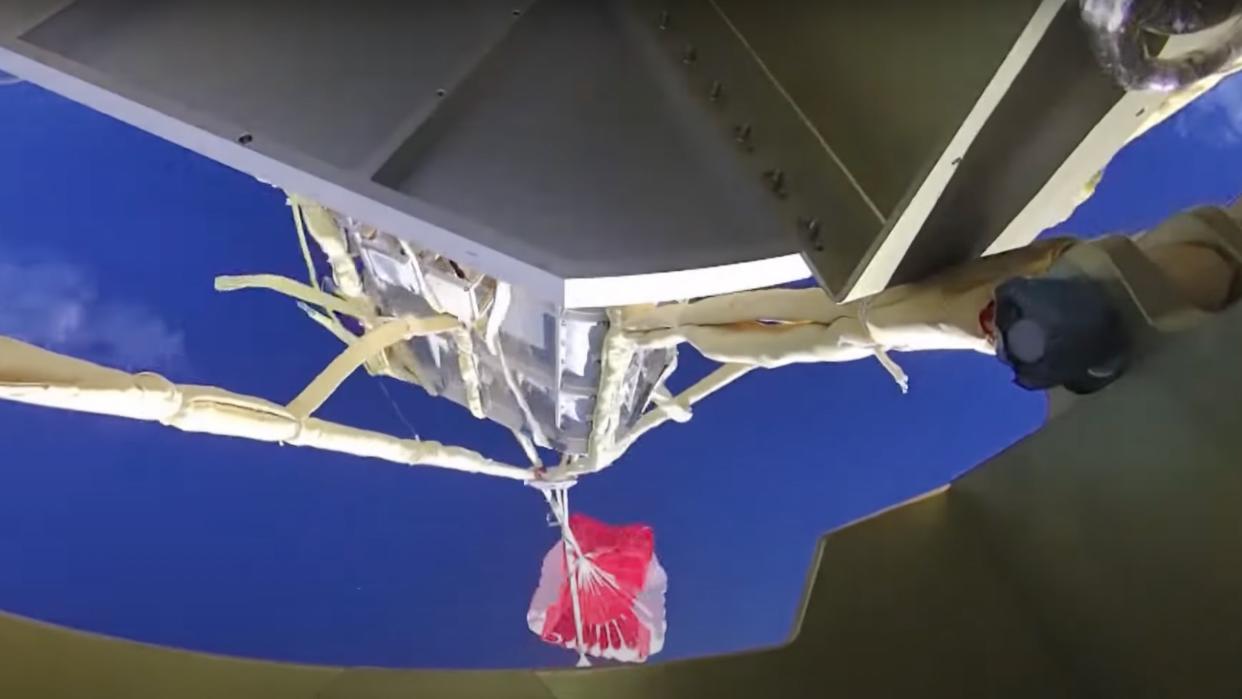New parachute system could ease some of China's rocket-debris issues (video)

A new parachute system could reduce the risk posed by Chinese satellite launches from inland spaceports.
Earlier this month, the China Academy of Launch Vehicle Technology (CALT) published footage of a parachute system deploying from a spent rocket booster used to help launch a Beidou navigation satellite on May 17.
The parachute system is designed to give more control over where the rocket booster lands. The parafoil automatically opens at a set altitude during descent, helping guide the booster back to a predetermined landing area.
Related: The latest news about China's space program

The system reduces the size of the landing zone by 80%, according to CALT. This advance, in turn, reduces the area that needs to be evacuated for launches, lowering the threat of damage to property or harm to people and animals downrange and the cost of safety and recovery measures.
China's first three national spaceports were built during the Cold War at a time when the country feared that the United States and Soviet Union could strike its launch facilities (which could loft not just satellites but also nuclear payloads).
Thus, for reasons of security, these spaceports were constructed inland. But this strategy created its own problems, due to spent rocket stages falling on land rather than at sea, as with most global orbital launches.
China's launch activities have greatly increased in recent years, meaning the issue of spent boosters falling near inhabited areas has become more pressing. Drop zones for spent rocket stages are calculated carefully to avoid more built-up areas, but the variability inherent in launches means that these heavy rocket components can still fall within a wide area.
Launches of Beidou satellites from Xichang using Long March 3B rockets notably resulted in a number of near misses in recent years. The hypergolic propellant mix used by the Long March 3B is also both highly toxic and carcinogenic, thus posing a further threat once on the ground.
The system has only been deployed on the Long March 3B for now. Other Long March rockets launching from Jiuquan in the northwest, Taiyuan in the north and Xichang in southwest still pose their own threat.
RELATED STORIES:
— China wants to launch over 200 spacecraft in 2023
— 23-ton Chinese rocket debris falls to Earth over Pacific Ocean
— Chinese launch company tests vertical rocket landings with jet-powered prototype (video)
The parachute system will not, however, be of use for the uncontrolled reentries of the Long March 5B. The massive first stages of this rocket enter orbit and reenter Earth's atmosphere at unpredictable times and locations while traveling at very high speeds.
China opened its first coastal spaceport, Wenchang, on the island of Hainan in 2014. Wenchang hosts some of China's most ambitious missions, including space station module launches and missions to the moon and Mars.
A commercial spaceport is also now under construction on Hainan, while smaller rockets can also launch from a sea platform with the help of facilities at Haiyang, on the coast of the eastern province of Shandong. A number of commercial firms are also trying to develop reusable rockets, which would provide another method for reducing the threat of falling space debris.

